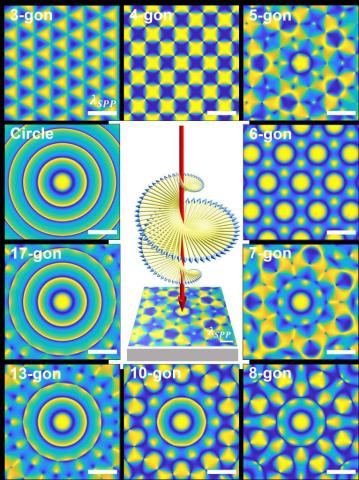
Research done by Hrovje Petek and his team was recently featured as a Perspective Article in ACS Photonics. The paper titled "The Spin Texture Topology of Polygonal Plasmon Fields" introduces "the topological properties of plasmonic vortices and to expand the discussion and understanding of how their topological spin and field textures dress material properties for exploration of fundamental physics and applications in photonics and spintronics." Read the full abstract below.
Abstract: Spin and field textures define the topology of the electric and magnetic fields in vacuum. These textures can be imposed on matter by light–matter interactions on the nanometer spatial and DC to femtosecond time scales to define the spatial and temporal symmetries of quasiparticle interactions. How to define the topology of thermodynamically evolving or dynamically imposed polaritonic textures is still an open question in applying control parameters such as temperature or phase of structured light. In this Perspective, we specifically consider the spin topology of geometrical plasmonic lattices formed by surface plasmon polariton fields spanning the full range of polygonal symmetries, ranging from the triangular to the circular including the intermediate aperiodic quasicrystalline tilings. Our premise is that the distortion of a triangular or a square lattice into a circular one, without introducing discontinuous geometric change, as by cutting, must preserve the polariton topology. From this perspective, we review the recent studies of stable optical field-induced dynamic quasiparticles with topological spin textures on the nanoscale. Specifically, we draw attention to how the topological spin textures evolve through the continuous deformation of the surface plasmon generating polygon geometries from triangular to circular. The goal of this Perspective is to introduce the topological properties of plasmonic vortices and to expand the discussion and understanding of how their topological spin and field textures dress material properties for exploration of fundamental physics and applications in photonics and spintronics.
